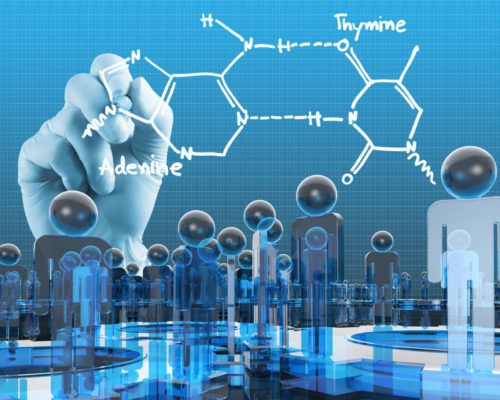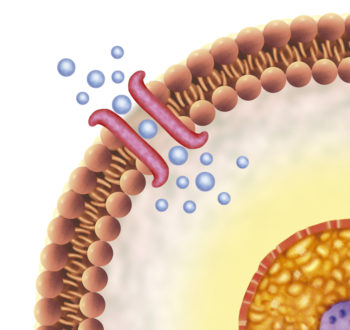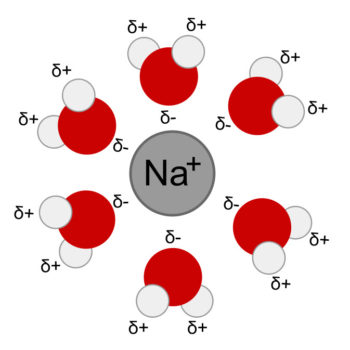Creating a study plan to learn human physiology
People write to me saying they struggle to learn human physiology. They ask how to best study physiology. They want to know how to get past the anxiety that human physiology is too hard for them to learn.
When I first began my own study of physiology, I too was anxious that I would never get my mind around this subject. Then I discovered that I was trying to put a rapidly expanding field of physiologic knowledge into a small package of memorized facts. Out of desperation – I really did want a PhD in physiology – I finally discovered the 3 essential ideas that make learning physiology practical.
3 Secrets to learning human physiology
- Learning physiology requires imagination to visualize a world of molecules.
- Physiology’s molecules are not static. They form a 3-D world in constant motion.
- 3 master control systems collaborate to organize physiology’s mobile molecules.
What I learned about human physiology more than 35 years ago has evolved. Knowledge of human physiology has expanded greatly. For example, very little was known then about how the human brain functioned back then. Now there is an ever clearer picture of how brain’s billions of cells work together. Yet, the plan I created in graduate school to learn physiology makes it easy for me to follow the latest data.
#1 – Imagination to Visualize Molecular World
A strong ability to imagine an invisible world is an important tool. A healthcare worker who recently read my book “Inside the Closed World of the Brain” said that it “made my head hurt trying to imagine all of those tiny things moving around inside me.” Physiology is chemistry, albeit a custom-designed form of chemistry. And, chemistry cannot be seen by the eyes. It may help to think of human anatomy as a 3-D printout of a fast-moving molecular world.
The good news is there are only a few imaginary scenarios needed. The same chemical explanations are used over and over from organ to organ. And a relatively small set of molecules are used to accomplish a variety of goals.
Using similar processes throughout, the human body dynamically balances multiple variables to produce a stable system. The body is divided into small and large compartments, each with its own set of internal functions. Molecular messages traveling between compartments sustain life.
Communication between body compartments involves the opening and closing of several types of physical channels in cell membranes. Each membrane channel type has a specific size, shape and a unique set of regulatory schemes to open and close it.
Each membrane channel permits passage of one type of molecule. Sometimes membrane channels are open and other times they remain closed. Once this invisible dynamic world is imagined, mastering physiology becomes manageable.
#2 – A 3-D Molecular World in Constant Motion
People are made of mobile molecules moving through three-dimensional space. Most chemistry and physiology textbooks present biologic molecules as static two-dimension drawings. However, in people molecules exist as dynamic space-filling objects.
In people, unlike in chemistry lab, molecular motion is restrained and longer completely random. The rate at which molecules move is determined by temperature of their environment. Human body temperature is kept within a small range. That maintains the motion of physiologic molecules also within a small range.
Think about a car traveling from New York City to San Francisco. If the car’s movement was totally random, and circumstances favorable, it is possible the car may eventually get from New York City to San Francisco. However, restricting the car’s travel to the system of highways between the two cities is a more efficient means of accomplishing the goal.
The physiologic highway along which biologic molecules travel is water. Water is a particularly energetic, partially charged molecule which restricts the movement of other biologic molecules, forcing them along paths within and between body compartments.
Physiologic compartments form because some of the body’s molecules like the illustrated sodium ion readily interact with water and others do not. The fatty, water-hating molecules come together and form the walls, membranes, that establish compartments like cells.
Movement of biologic molecules through open channels in cell membranes, and through the material comprising cell membranes, depend upon simple chemical processes. Such processes include diffusion of molecules in water and the attracting and repelling nature of charged molecules.
#3 – 3 Master Controllers to Maintain Molecular Order
Master controllers of physiology are the nervous, cardiovascular, and endocrine systems – brain, hear,t and hormones. When something in the body breaks the master controllers find a way to compensate.
When a car breaks or malfunctions, it usually loses its ability to move. When a part in a person breaks, or an important variable drifts from its set point, physiology’s master systems simultaneously evaluate the situation. Then they work as partners to repair the situation before damage becomes intolerable. Life persists.
The key to efficient study of physiology is to first learn how the master controllers do their jobs. These three master systems are totally dependent upon each other. A shift in one compels a response in the other two.
A fight-or-flight situation is a familiar example of how the nervous, cardiovascular, and hormonal system work together to protect the overall well being of the body. During fight-or-flight, the brain sense danger and what to do next. The heart gets blood and energy molecules to the right muscles. The hormones enhance strength of the muscles and sustain the response.
Do you want to learn more?
Space is too limited here for me to fully explain all the details of how to study human physiology. However, if I have piqued your interest in my approach to learning physiology, I am offering an online video course in human physiology called the “30-Day Challenge: Craft Your Plan for Learning Physiology, formula for getting past the anxiety that physiology is too hard.”
In this course students dive into the patterns the master controllers use in working together as they simultaneously manage the body’s chemistry. At the end of an hour a day for 30 short days, participants have all the tools they need to easily learn the physiologic function of each anatomic system.
Additional study tips:
Study Anatomy & Physiology for Maximum Learning
Do you have questions?
Send me an email with your questions at DrReece@MedicalScienceNavigator.com or put them in the comment box. I always read my mail and answer it. Please share this article with your fellow students taking anatomy and physiology by clicking your favorite social media button.
Margaret Thompson Reece PhD, physiologist, former Senior Scientist and Laboratory Director at academic medical centers in California, New York and Massachusetts is now Manager at Reece Biomedical Consulting LLC.
She taught physiology for over 30 years to undergraduate and graduate students, at two- and four-year colleges, in the classroom and in the research laboratory. Her books “Physiology: Custom-Designed Chemistry”, “Inside the Closed World of the Brain”, and her online course “30-Day Challenge: Craft Your Plan for Learning Physiology, formula for getting past the anxiety that physiology is too hard”, and “Busy Student’s Anatomy & Physiology Study Journal” are created for those planning a career in healthcare. More about her books is available at https://www.amazon.com/author/margaretreece. You may contact Dr. Reece at DrReece@MedicalScienceNavigator.com, or on LinkedIn.
Dr. Reece offers a free 30 minute “how-to-get-started” phone conference to students struggling with human anatomy and physiology. Schedule an appointment by email at DrReece@MedicalScienceNavigator.com.






